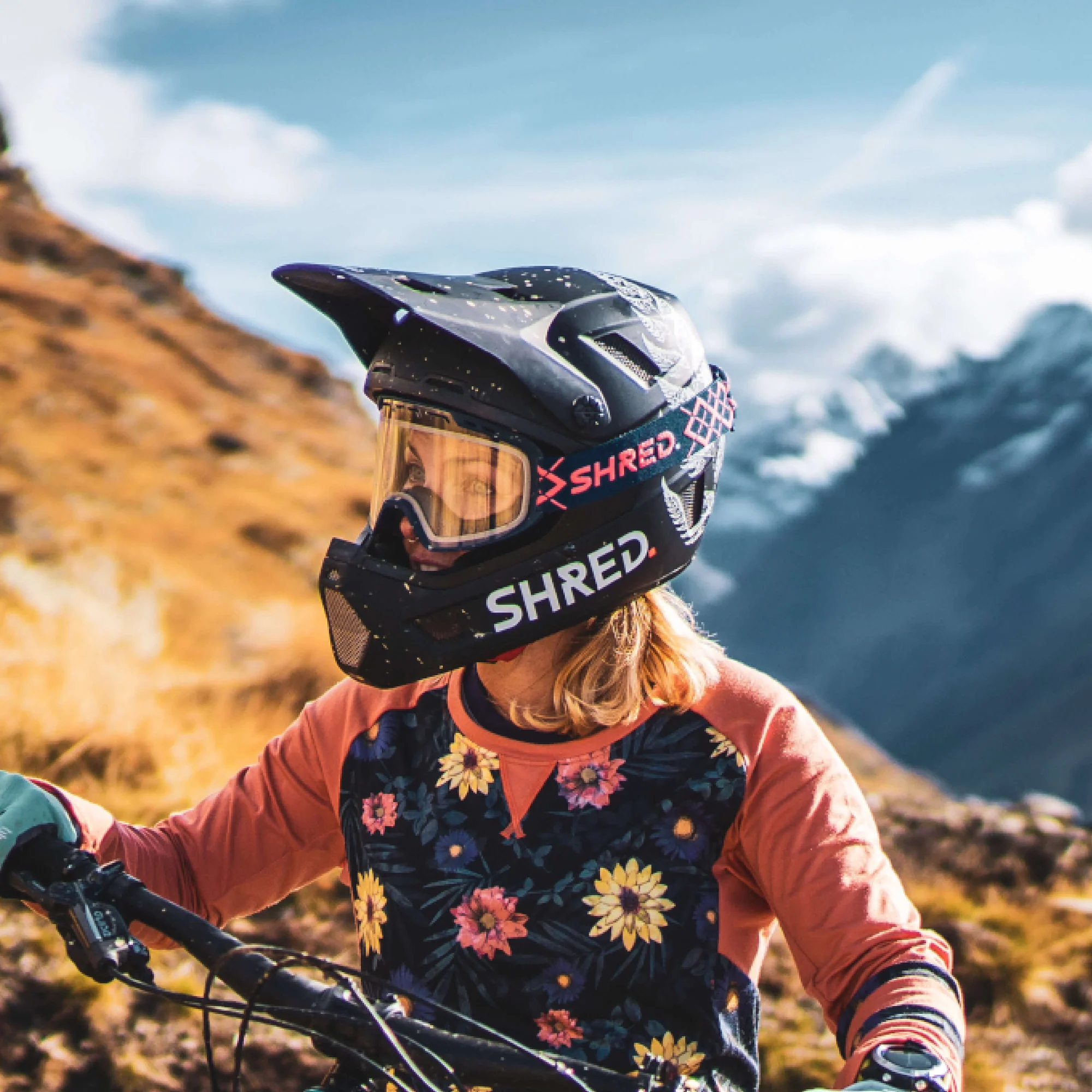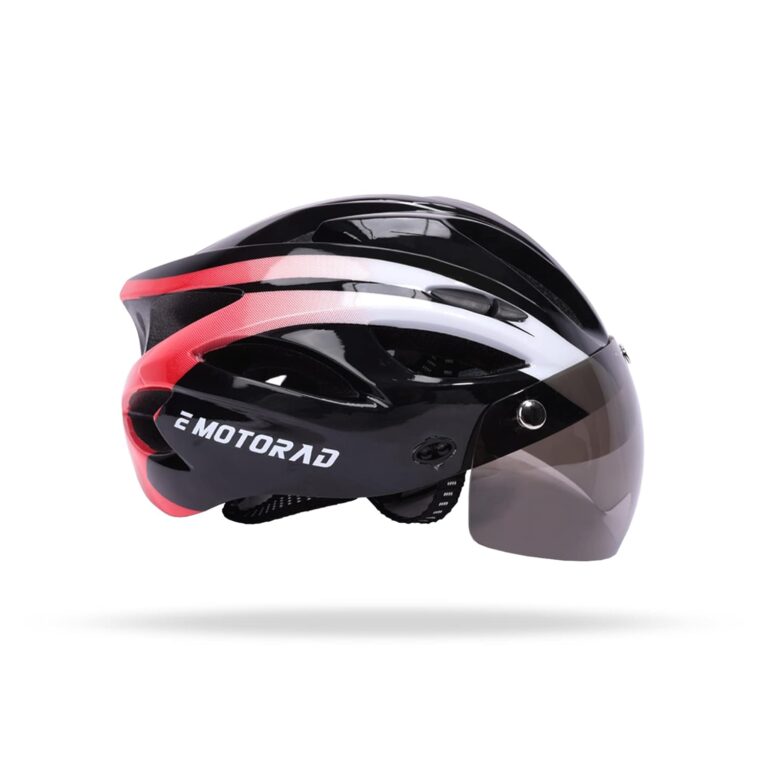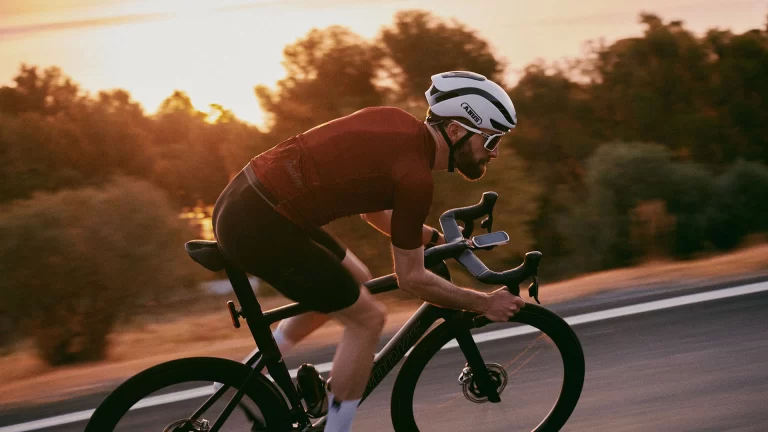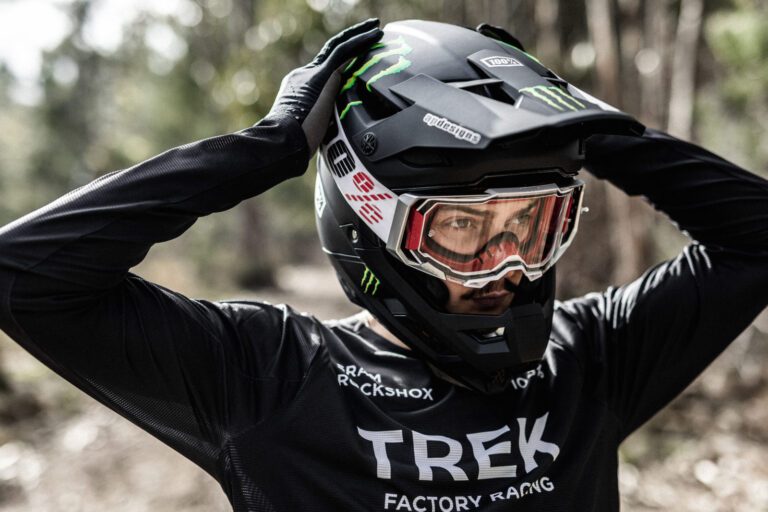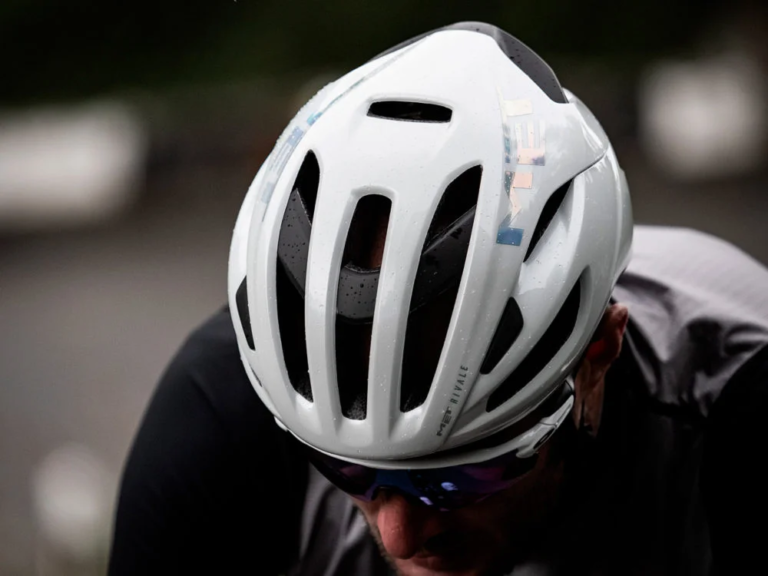Exploring the Essential Safety Features in MTB Helmets for Enhanced Rider Protection

Key Point Summary of Safety Features in MTB Helmets:
- Importance of Fit and Comfort: Understanding how a well-fitted MTB helmet can enhance safety and comfort.
- Advanced Safety Technologies: Exploring modern helmet safety features like MIPS, SPIN, and WaveCel.
- Material and Design Choices: Discussing the significance of helmet materials and design in protection during MTB rides.
As a seasoned masters cyclist, I’ve spent countless hours racing and riding across various terrains – from challenging mountain bike trails to the rugged paths of gravel and cyclocross biking. My experience has taught me the immense importance of proper cycling gear, especially when it comes to helmets. In this article, I’ll share insights tailored for cyclists with beginner to mid-level experience, focusing on the crucial aspect of helmet safety features in MTB (Mountain Bike) protection.
The Importance of Fit and Comfort
A good helmet is your best friend on the trails. Early in my cycling journey, I learned this the hard way. During a rocky descent on a mountain trail, I took a minor tumble. Fortunately, my helmet, which was snugly fitted, absorbed the impact, leaving me unscathed. This incident underscored the importance of a well-fitted helmet – it’s not just about wearing one, but ensuring it fits perfectly.
When choosing a helmet, look for one that sits comfortably on your head without wobbling. Adjustable straps and a retention system at the back are key to a secure fit. A helmet that doesn’t fit well is almost as bad as not wearing one at all.
Advanced Safety Technologies
Modern MTB helmets aren’t just pieces of hard foam. They’re sophisticated safety devices equipped with technologies like MIPS (Multi-directional Impact Protection System), SPIN (Shearing Pad INside), and WaveCel. Each of these features offers additional protection against rotational forces during an angled impact – a common scenario in mountain biking accidents.
I switched to a MIPS-equipped helmet a few years ago and noticed the difference immediately during a crash. The helmet’s ability to rotate slightly upon impact significantly reduced the force transmitted to my head. This technology could be a game-changer in preventing concussions and more serious brain injuries.
Material and Design Choices
The material and design of a helmet significantly influence its protective capabilities. Most helmets are made from expanded polystyrene (EPS) foam covered with a hard plastic shell. This combination provides excellent shock absorption. Some high-end models also incorporate carbon fiber or other lightweight materials for added strength without increasing weight.
Ventilation is another critical aspect. Ample venting not only keeps your head cool but also impacts the helmet’s overall weight and comfort. During a summer race in the high mountains, I was grateful for my helmet’s ample ventilation, which kept me cool and focused.
Additional Features Worth Considering
Beyond the primary safety features, there are additional aspects to consider:
- Visors: Useful for MTB helmets, they protect your eyes from sun glare and low-hanging branches. I remember a race where a well-placed visor saved me from a nasty face-first encounter with a branch.
- Camera and Light Mounts: For those who love recording their rides, some helmets come with integrated mounts. Just ensure they don’t compromise the helmet’s integrity.
- Reflective Elements: If you ride in low-light conditions, helmets with reflective materials can enhance visibility and safety.
Maintenance and Replacement
Helmets are not forever. They degrade over time, and their protective capabilities diminish. I replace my helmet every three to five years or immediately after a significant impact. It’s a small price to pay for safety.
Advanced Safety Technologies in Detail
1. MIPS (Multi-directional Impact Protection System)
- How it Works: MIPS is designed to reduce rotational forces on the brain caused by angled impacts to the head. Inside the helmet, there’s a slip-plane layer that allows the helmet to rotate slightly around your head upon impact.
- Personal Experience: I recall a challenging trail with unexpected sharp turns. During one such turn, my bike skidded, and I hit the ground sideways. Thanks to my MIPS-equipped helmet, the rotational force was significantly lessened, preventing a more severe injury.
- Scientific Backing: Research shows that MIPS can reduce rotational motion by redirecting energies and forces otherwise transmitted to the brain.
2. SPIN (Shearing Pad INside) by POC
- Innovation Behind SPIN: Similar to MIPS, SPIN technology uses silicone-injected pads that can shear in any direction, allowing the helmet to move relative to the head during an oblique impact.
- Why it Matters: This shearing action aims to decrease the force transmitted to the brain, potentially reducing the risk of concussion. Here’s what SPIN technology looks like, as shown in this YouTube video.
3. WaveCel
- Understanding WaveCel: Developed by Bontrager, WaveCel is a collapsible cellular structure that lines the inside of the helmet. Upon impact, these cells crumple and glide, which helps to absorb both the linear and rotational forces.
- Real-world Application: I’ve not personally used a WaveCel helmet yet, but the technology is highly praised for its ability to deal with multiple types of impact forces, a common scenario in mountain biking.
4. Koroyd Technology
- What is Koroyd? It’s a unique honeycomb-like material used in some high-end helmets. Koroyd tubes crush uniformly on impact, absorbing more energy and reducing trauma.
- Added Advantage: Besides its safety features, Koroyd also allows for excellent ventilation, a feature I’ve found particularly appealing in other riders’ reviews.
The Evolution of Helmet Safety
The evolution of these technologies signifies a monumental shift in helmet design. Gone are the days when helmets were just hard shells with padding. Today’s helmets are the result of extensive research and development in the field of neurology and trauma prevention.
My Recommendation
From my personal experience and understanding of these technologies, I highly recommend investing in a helmet that incorporates one or more of these safety features. While they may come at a higher cost, the added protection they provide is invaluable, especially in a sport as unpredictable as mountain biking.
Embracing New Technologies
As a cyclist, embracing these new technologies has been a game-changer. Initially, I was skeptical about the real-world benefits of systems like MIPS and WaveCel. However, after experiencing a few close calls and minor accidents, I realized their value. These aren’t just abstract concepts developed in labs; they are practical, rider-centric solutions to real-world problems we face on the trails.
Educating Fellow Riders
Part of my journey has also involved educating fellow riders about the importance of these technologies. I’ve seen many beginners and even intermediate riders overlook the significance of advanced helmet safety features, often opting for basic models. Through group rides and local cycling clubs, I emphasize how a proper helmet can mean the difference between a minor mishap and a life-altering injury.

The Future of Helmet Safety
Looking forward, I’m excited about the potential advancements in helmet safety. With technology continually evolving, the next generation of helmets could offer even greater protection, possibly integrating features like impact sensors and real-time data analysis to further enhance rider safety. Combining advanced safety technologies with additional features in MTB helmets creates an ideal blend of protection and functionality. Here are some helmets that incorporate both these aspects, making them top choices for mountain bikers:
1. Giro Montaro MIPS
- Advanced Safety: Equipped with MIPS technology for added protection against rotational forces.
- Additional Features: This helmet includes an adjustable visor, camera/light mount, and excellent ventilation, making it a versatile choice for both recreational and serious mountain bikers.
2. POC Tectal Race SPIN
- Advanced Safety: Features POC’s SPIN (Shearing Pad INside) technology for enhanced rotational impact protection.
- Additional Features: Comes with an adjustable visor, a lightweight design, and RECCO reflector technology for improved searchability in case of an accident in remote areas.
3. Bontrager Blaze WaveCel
- Advanced Safety: Incorporates WaveCel technology, a collapsible cellular structure that lines the inside of the helmet for exceptional impact protection.
- Additional Features: This helmet offers a BOA® Fit System for precise adjustments, an adjustable visor, and a magnetic Fidlock® buckle for ease of use.
4. Smith Forefront 2
- Advanced Safety: Utilizes Koroyd technology for superior energy absorption and MIPS for rotational protection.
- Additional Features: Features an integrated camera/light mount, adjustable visor, and sunglass storage capabilities, making it a great choice for tech-savvy riders.
5. Bell Super 3R MIPS
- Advanced Safety: Comes with MIPS technology for enhanced protection.
- Additional Features: Unique to this helmet is its removable chin bar, making it highly versatile for all types of mountain biking. It also includes an adjustable visor and camera mount compatibility.
6. Specialized Ambush with ANGi
- Advanced Safety: Equipped with MIPS and also features ANGi, a crash sensor that sends out a location alert in case of an accident.
- Additional Features: Offers a Mindset 360 fit system for precise adjustment, along with an adjustable visor and ample ventilation.
7. Fox Racing Speedframe Pro
- Advanced Safety: Though it doesn’t feature MIPS, it has a dual-density Varizorb EPS liner for improved impact resistance.
- Additional Features: Includes a 360-degree fit system, and an adjustable visor, and is designed to optimize airflow, making it a comfortable option even in hot weather.
Personal Insights
In my experience, each of these helmets offers a unique combination of safety and additional features. For instance, I found the Giro Montaro MIPS to be exceptionally comfortable for long rides, while the POC Tectal Race SPIN stood out for its sleek design and advanced safety features.
Choosing the Right Helmet
When selecting an MTB helmet, consider the type of riding you do, the fit, and of course, the safety technologies. While all these helmets are top-of-the-line, your choice should depend on which features align best with your specific needs. For example:
- For Versatility: The Bell Super 3R MIPS with its removable chin bar is ideal for riders who alternate between aggressive downhill and more casual trail riding.
- For Tech Enthusiasts: If you’re into gadgets and tech, the Specialized Ambush with ANGi offers cutting-edge crash sensor technology, enhancing safety through connectivity.
- For Hot Climates: The Fox Racing Speedframe Pro, known for its superior ventilation, is a great option for riders in warmer regions.
FAQ
What makes a safe helmet?
A safe helmet is characterized by a proper fit, sturdy construction, advanced safety features like MIPS or SPIN for rotational impact protection, adequate ventilation, and compliance with safety standards like CPSC or EN 1078.
What are the safety measures for wearing a helmet?
The safety measures for wearing a helmet include ensuring a proper fit, adjusting the straps for a snug yet comfortable fit under the chin, checking for any damage or cracks, and replacing the helmet after a significant impact or every 3-5 years.
How do I know if a bike helmet is safe?
To know if a bike helmet is safe, check that it fits properly, is free of damage, has a certification label (like CPSC, EN 1078), and includes advanced safety features like MIPS or SPIN if available. Regular inspection for wear and tear is also important.
Final Thoughts
As we continue to push the boundaries of mountain biking, the technology in our gear, especially helmets, needs to keep pace. The advanced safety technologies in MTB helmets are a testament to the cycling industry’s commitment to rider safety. Whether it’s MIPS, SPIN, WaveCel, or Koroyd, these features are essential for anyone serious about mountain biking. They’ve certainly given me peace of mind, allowing me to tackle challenging terrains with confidence. Investing in a high-quality helmet is investing in your safety and well-being on the trails.
In mountain biking, the unpredictability of the trail makes a reliable helmet an indispensable part of your gear. It’s not just about complying with safety norms; it’s about respecting the risks associated with the sport and valuing your well-being. As a rider who has navigated all sorts of terrains and faced numerous close calls, I cannot stress enough the importance of investing in a helmet equipped with the latest safety features.
Stay safe, and enjoy the ride!
John
